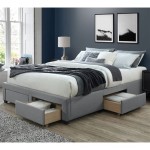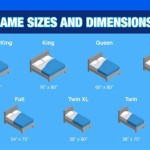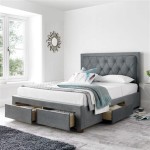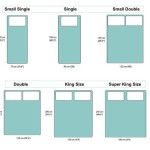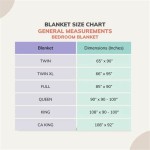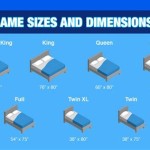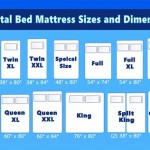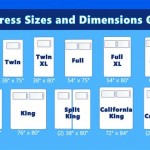Full Size Mattress Covers for Bed Bug Protection
Bed bugs are a persistent problem for many homeowners, and mattresses are a prime target due to their numerous creases and folds that provide ideal hiding places. A full-size mattress cover designed for bed bug protection offers a proactive and effective solution to prevent infestations and control existing ones. These covers, also known as mattress encasements, create a barrier that prevents bed bugs from entering or escaping the mattress, effectively starving any bugs trapped inside and preventing new bugs from establishing a colony.
The effectiveness of a full-size mattress cover for bed bug control hinges on several factors, including the quality of the materials used, the design of the zipper and seams, and proper installation and maintenance. Understanding these aspects is crucial for selecting the right cover and ensuring its long-term efficacy.
This article will explore the key features and benefits of full-size mattress covers for bed bug protection, focusing on the materials, construction, and application of these essential bedding accessories. It will also delve into best practices for selecting, installing, and maintaining these covers to achieve optimal protection against bed bug infestations.
Key Point 1: Material and Construction of Bed Bug Mattress Covers
The material and construction of a full-size mattress cover are paramount to its ability to effectively prevent bed bugs from infesting a mattress. Several factors need consideration when evaluating the protective capabilities of different materials.
The primary purpose of a bed bug mattress cover is to create an impenetrable barrier. Therefore, the fabric must be tightly woven with small pore sizes. Microfiber fabrics are commonly used because they have a very tight weave, preventing bed bugs, which are typically about 1mm in size, from passing through. The smaller the pore size, the more effective the barrier. Covers should ideally have a pore size of less than 6 micrometers.
Common materials used in the construction of bed bug mattress covers include:
*Polypropylene:
A lightweight and cost-effective option, polypropylene is often used in less expensive encasements. While it can provide a basic level of protection, it may not be as durable as other materials. *Polyester:
A more durable and breathable fabric than polypropylene, polyester offers good protection against bed bugs. It is also relatively easy to clean and maintain. *Laminated Fabrics:
These fabrics combine a base material, such as polyester or cotton, with a waterproof or water-resistant laminate layer. The laminate adds an extra layer of protection and prevents liquids from penetrating the mattress, which can also deter bed bugs. *Cotton:
While cotton itself is not an effective barrier against bed bugs, it is often used as a top layer in combination with other materials, such as a laminate, to provide comfort and breathability. *Vinyl:
Vinyl covers provide a complete waterproof barrier but can be less breathable and may be uncomfortable to sleep on directly. They are often used in situations where hygiene and liquid protection are paramount.The construction of the cover is as important as the material. Seams must be tightly stitched and reinforced to prevent bed bugs from crawling through them. The zipper is the most vulnerable point in the cover’s design. High-quality bed bug mattress covers feature zippers that are specifically designed to be bed bug proof. These zippers often have a locking mechanism or a fabric flap that covers the zipper teeth, preventing bed bugs from entering or escaping.
Furthermore, the cover should encase the entire mattress, including all sides and the bottom. This ensures that all potential entry points are sealed off. Some covers may also include special features, such as antimicrobial treatments, to further enhance their protective capabilities.
Selecting a mattress cover with a high-quality material and careful construction is essential for effective bed bug protection. It is important to consider the trade-offs between different materials in terms of durability, breathability, and cost to find the best option for individual needs and preferences.
Key Point 2: Selecting the Right Full-Size Mattress Cover
Choosing the appropriate full-size mattress cover for bed bug protection requires careful consideration of several factors beyond just the material and construction. Different covers offer varying levels of protection and comfort, and it's crucial to select one that meets specific needs and preferences.
Before purchasing a mattress cover, accurately measure the dimensions of the mattress, including the length, width, and depth. This will ensure a proper fit, as a loose or ill-fitting cover will not provide adequate protection. A snug fit is essential to prevent bed bugs from finding gaps and entering the mattress.
Consider the following factors when choosing a mattress cover:
*Certification:
Look for mattress covers that have been tested and certified by independent laboratories to ensure they meet established standards for bed bug protection. Certifications from reputable organizations indicate that the cover has been rigorously tested and proven to be effective in preventing bed bug infestations. *Water Resistance:
If liquid spills or incontinence are a concern, choose a mattress cover that is waterproof or water-resistant. This will protect the mattress from stains and moisture, which can create a favorable environment for bed bugs and other pests. *Breathability:
While waterproof covers provide excellent protection, they can also be less breathable, leading to discomfort and overheating. Look for covers that offer a balance of water resistance and breathability, especially if comfort is a priority. Materials like laminated fabrics with cotton tops can offer this balance. *Hypoallergenic Properties:
If allergies are a concern, consider a mattress cover that is hypoallergenic and free from irritating chemicals. These covers are designed to minimize the risk of allergic reactions and provide a healthier sleep environment. *Zipper Quality:
Examine the zipper closely to ensure it is sturdy and well-constructed. The zipper should have a locking mechanism or a flap that covers the teeth to prevent bed bugs from entering or escaping. A poorly constructed zipper can compromise the effectiveness of the entire cover. *Ease of Cleaning:
Choose a mattress cover that is easy to clean and maintain. Most covers can be machine washed and dried, but it's important to follow the manufacturer's instructions to avoid damaging the material. Regular cleaning will help to keep the cover free from dust, allergens, and other contaminants. *Warranty:
A good warranty indicates the manufacturer's confidence in the quality and durability of their product. Look for covers that come with a warranty that covers defects in materials and workmanship.Reading reviews from other customers can provide valuable insights into the performance and durability of different mattress covers. Pay attention to reviews that mention bed bug protection, comfort, and longevity. Consider the potential need for encasing box springs as well, as they also offer harboring space for bed bugs.
By carefully considering these factors and comparing different options, it is possible to select a full-size mattress cover that provides effective bed bug protection and meets individual needs and preferences.
Key Point 3: Installation and Maintenance of Mattress Covers
Proper installation and ongoing maintenance are critical to ensuring the long-term effectiveness of a full-size mattress cover for bed bug protection. Even the highest-quality cover will be ineffective if it is not installed correctly or if it is not properly maintained.
Before installing the mattress cover, thoroughly inspect the mattress for any signs of bed bugs, such as live bugs, shed skins, or fecal stains. If bed bugs are present, consider treating the mattress with a suitable insecticide before encasing it. Alternatively, if the infestation is heavy, the mattress may need to be discarded to prevent further spread of bed bugs.
Follow these steps for proper installation:
*Remove all bedding:
Remove all sheets, blankets, and other bedding from the mattress. *Inspect the cover:
Inspect the mattress cover for any defects, such as tears or holes, before installing it. *Unzip the cover:
Fully unzip the mattress cover and carefully slide it over the mattress. *Encase the mattress:
Ensure that the entire mattress is fully encased, including all sides and the bottom. *Zip the cover closed:
Carefully zip the cover closed, making sure that the zipper is fully engaged and that the locking mechanism, if present, is properly secured. *Inspect the installation:
Inspect the installed cover for any gaps or openings. Pay particular attention to the zipper area and the corners of the mattress.Regular maintenance is essential for preserving the integrity of the mattress cover and preventing bed bug infestations. Follow these guidelines:
*Regular Cleaning:
Clean the mattress cover regularly to remove dust, allergens, and other contaminants. Most covers can be machine washed and dried, but it's important to follow the manufacturer's instructions. *Inspect for Damage:
Periodically inspect the mattress cover for any signs of damage, such as tears or holes. Repair any damage immediately to prevent bed bugs from entering the mattress. *Avoid Harsh Chemicals:
Avoid using harsh chemicals or abrasive cleaners on the mattress cover, as these can damage the material and compromise its protective capabilities. *Protect the Zipper:
Be careful when zipping and unzipping the mattress cover to avoid damaging the zipper. If the zipper becomes damaged, it may need to be replaced. *Monitor for Bed Bugs:
Continue to monitor the bedding area for signs of bed bugs, even after installing a mattress cover. Bed bugs can still infest other areas of the room, such as furniture, carpets, and walls.By following these installation and maintenance guidelines, it is possible to maximize the effectiveness of a full-size mattress cover and ensure long-term protection against bed bug infestations. Remember, a mattress cover is just one component of a comprehensive bed bug control strategy. It's important to address bed bug infestations comprehensively by treating all affected areas and taking preventative measures to avoid future infestations.
Investing in a high-quality, properly installed, and well-maintained full-size mattress cover is a proactive step in ensuring a safe and healthy sleep environment, free from the nuisance and health risks associated with bed bug infestations. Continuous monitoring and adherence to preventive measures are key to maintaining a bed bug-free home.

Linen Studio Mattress Protector King Microfiber Spill Proof Bed Bug Premium Zipper Encasement Hs Bedb White The Home

Waterproof Zippered Mattress Protector Bed Bugs Dust Mites Cover Hypoallergenic

Remedy Bed Bug Dust Mite Cotton Mattress Protector Full

Full Size Mattress Cover Zipper Waterproof Plastic Bed Bug Dust Mites Allergens

Cozy Comfort Bed Bug Proof Mattress Cover Full Size Protector 100 Waterproof For Zippered Encasement Six Sided 15 Inches Deep

Full All In One Mattress Protector Cover With Zippered Bed Bug Blocker

Kleencover Ultimate Encasement Full Plus Fits 54x75 80 And 9 15 D Bedbug Certified Waterproof

Full Size Mattress Cover Soft Breathable Waterproof Noiseless Bed Bug Protector For Deep 6 14 Pad 1 Pack

International Sizes Mattress Encasement Cover Waterproof Bed Bug Australia

Bedbug Solution Elite Zippered Mattress Cover Fits Up To 16 Deep

